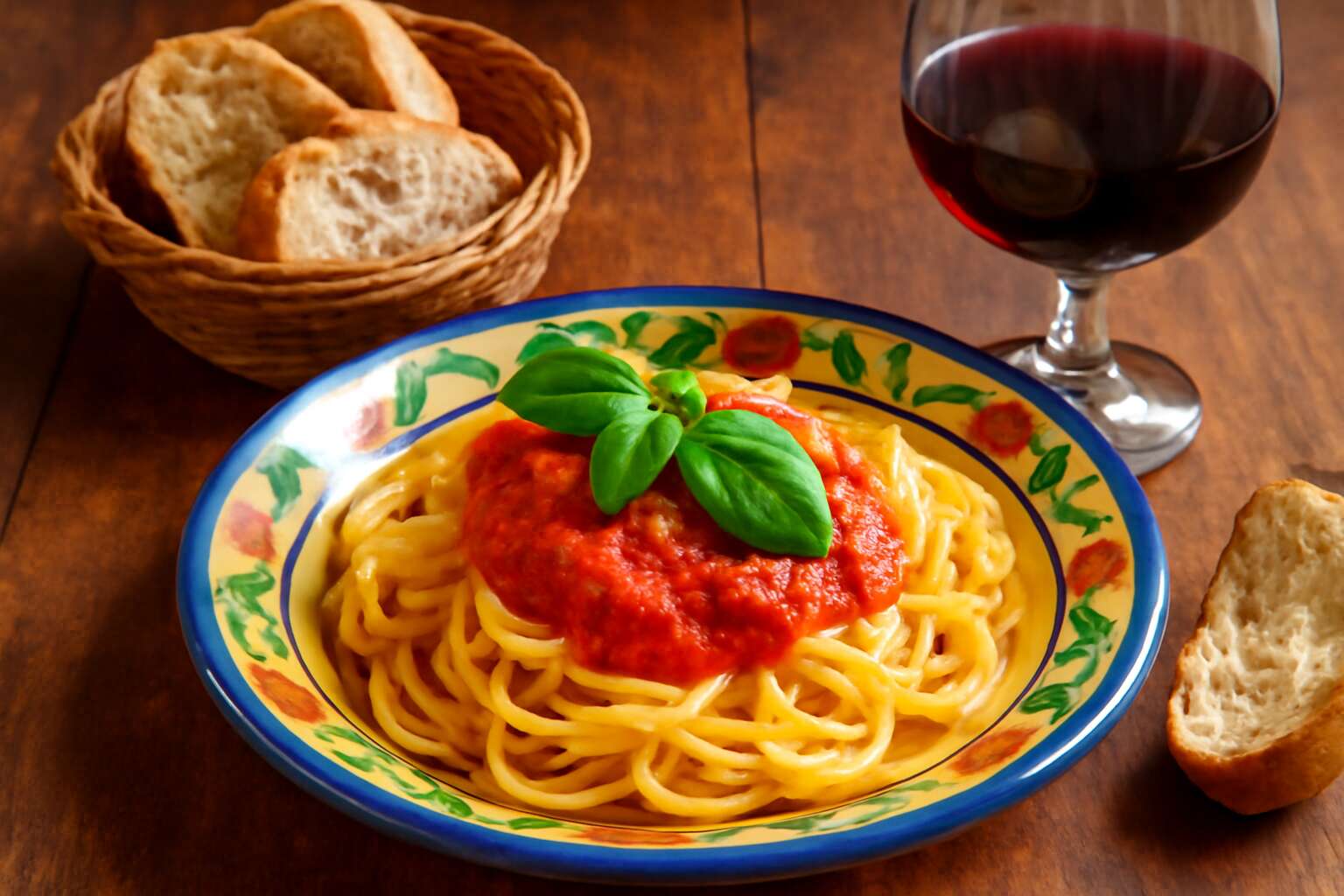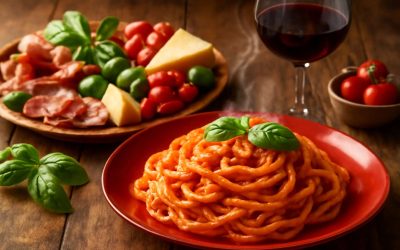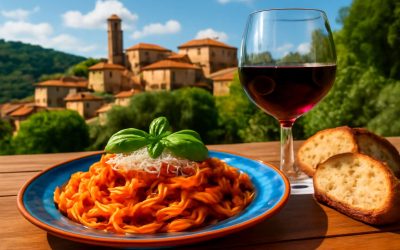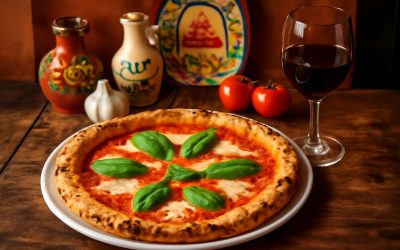The Rich History and Origins of Italian Cuisine
Historical Evolution of Italian Food
Italian cuisine, celebrated worldwide for its vibrant flavours and rich heritage, boasts a history as captivating as its dishes. Its roots can be traced back over two millennia, blending the influences of ancient Rome, the Byzantine Empire, and the Arab nations that traded with the Mediterranean coast. This melting pot of cultures created a culinary tapestry that continues to evolve today, making it impossible not to wonder why is Italian food considered one of the most beloved cuisines globally.
The evolution of Italian food reflects centuries of regional adaptations and innovations. In the north, hearty risottos and polenta emerged from agrarian traditions, while the south became famed for its sun-ripened tomatoes, fragrant basil, and olive oil. Over time, these ingredients fused into timeless classics like pizza and pasta, which now serve as symbols of Italian culinary artistry. The historical journey of Italian food reveals a story of resilience and creativity—one that invites us to explore its flavours and origins with every bite.
Regional Influences on Italian Cooking
The origins of Italian cuisine are as layered and intricate as the dishes themselves. Rooted in the fertile lands surrounding the Mediterranean, its history mirrors a tapestry woven from diverse cultures and epochs. From the ancient Roman empire’s influence to the Byzantine’s delicate spice trade, each civilisation contributed a unique thread to Italy’s culinary fabric. This blend of traditions cultivated a rich heritage that transcends mere sustenance, becoming an expression of identity and artistry.
Regional influences are profound and palpable in Italian cooking, shaping its character with distinct local ingredients and techniques. In the north, the emphasis on rice-based dishes like risottos and hearty polenta reflects a colder climate and alpine traditions. Conversely, the south, blessed with abundant sunshine, is renowned for its sun-ripened tomatoes, fragrant basil, and olive oil—cornerstones of iconic dishes like pizza and pasta. This geographical diversity explains why is Italian food so beloved worldwide, as each region’s flavours tell a story of climate, history, and cultural resilience.
Ancient Traditions and Modern Adaptations
Italian cuisine’s origins are a labyrinthine mosaic, intricately woven through centuries of historical upheaval, cultural exchanges, and culinary ingenuity. It is a gastronomic tradition that has evolved from ancient ritualistic practices to a sophisticated art form embraced worldwide. The roots of Italian food lie in the fertile soils of the Mediterranean, where early civilizations like the Etruscans and Romans laid foundational techniques and flavour profiles that persist today. These ancient traditions have been meticulously preserved and subtly adapted to modern tastes, creating a culinary dialogue between the past and present.
To truly understand why is Italian food so revered, one must appreciate its dynamic capacity for reinvention. From the rustic simplicity of regional antipasti to the refined elegance of contemporary pasta dishes, Italy’s culinary evolution reflects a deep respect for tradition fused with innovation. In fact, the enduring appeal of Italian cuisine is rooted in this delicate balance—where time-honoured recipes are reimagined through modern techniques, ensuring each dish remains both timeless and relevant. The question of why is Italian food so compelling ultimately lies in its ability to echo history while constantly embracing change.
Unique Flavors and Ingredients in Italian Food
Fresh and Quality Ingredients
Italian cuisine is a symphony of unique flavours and ingredients, each note crafted with passion and precision. The reason why is Italian food so captivating lies in its unwavering commitment to fresh, high-quality produce that elevates every dish into a masterpiece. From plump tomatoes bursting with sunshine to fragrant basil leaves, the ingredients are chosen not just for their taste but for their ability to tell a story of land, tradition, and artistry.
What sets Italian food apart is its reliance on authenticity and simplicity — yet hidden within this minimalism are layers of complexity. Many dishes incorporate a carefully curated list of ingredients that work in harmony, such as:
- Extra virgin olive oil — the liquid gold that binds the flavours
- Fresh herbs — basil, oregano, and thyme, adding fragrant depth
- Handmade pasta — crafted with patience, embodying tradition
These elements create a culinary mosaic that is as diverse as Italy itself, making every bite a journey into a world where quality reigns supreme and flavours are celebrated for their natural purity. This devotion to fresh ingredients is precisely why is Italian food cherished worldwide, a testament to its timeless appeal and culinary integrity.
Essential Italian Staples
Few culinary traditions manage to marry simplicity and sophistication quite like Italian food, where each ingredient plays a starring role in a flavour symphony. The question of why is Italian food so universally beloved often hinges on its unique flavours and ingredients, which are as authentic as the rolling Tuscan hills. It’s a cuisine rooted in tradition yet bursting with inventive spirit, making every dish a testament to Italy’s rich cultural tapestry.
What truly sets Italian cuisine apart are its distinctive, high-quality ingredients—each chosen not only for taste but for the story they tell. For example, the pungent aroma of aged Parmesan cheese or the vibrant hue of sun-ripened tomatoes exemplifies how Italy’s culinary staples are crafted from land and history. These ingredients, when combined, form a harmonious ensemble that elevates even the simplest pasta or salad into a work of art.
Essential Italian staples include:
- Extra virgin olive oil — the essential base for flavour and texture
- Fresh herbs — basil, oregano, and rosemary, which add fragrant depth
- Handmade pasta — embodying centuries of artisanal craftsmanship
Each element contributes to the layered complexity that makes Italian food so captivating. The secret lies in its ability to celebrate natural ingredients while maintaining an elegant simplicity—an aspect that is as relevant today as it was centuries ago. This commitment to quality and authenticity is precisely why is Italian food cherished worldwide, transcending borders and taste buds alike.
Herbs and Spices That Define Italian Taste
Few culinary traditions possess the aromatic complexity and soul-stirring vibrancy of Italian cuisine. Central to its allure are the herbs and spices that define why is Italian food so irresistibly distinctive. These elements are not mere seasonings; they are the essence of Italy’s flavour profile, woven into every dish like a secret spell cast by centuries of culinary mastery.
Italian herbs such as basil, oregano, and rosemary are more than just ingredients—they are symbols of land, legend, and tradition. Each herb brings a unique story and character, elevating simple ingredients into culinary masterpieces. For example, fresh basil’s sweet, peppery aroma conjures images of sun-drenched gardens, while oregano’s robust earthiness anchors sauces with a fragrant depth.
Spices, though used sparingly, contribute profound layers of flavour—crushed red pepper for a fiery kick, or a hint of fennel seed that whispers of ancient Mediterranean markets. These carefully selected herbs and spices are the building blocks that give Italian dishes their unmistakable character, making every bite an immersive experience. It’s precisely this balance—of natural, high-quality ingredients and an artful touch—that reveals why is Italian food cherished globally, enchanting taste buds across borders with its enchanting medley of flavours.
Italian Food as a Cultural Identity
Tradition and Family Recipes
Italian food is much more than a culinary tradition; it’s a vibrant expression of cultural identity woven through generations. Family recipes, passed down with reverence and love, serve as living links to Italy’s rich history. These treasured dishes often embody centuries-old techniques, reflecting the enduring spirit of Italian families who gather around the table to share not just a meal but stories and memories. It’s this deep-rooted tradition that makes Italian food so captivating — a flavourful tapestry woven with family bonds and cultural pride.
Many Italian families cherish recipes that are kept secret and treasured, often inscribed in handwritten cookbooks or whispered across generations. These culinary heirlooms are a testament to the importance of family and tradition in Italian society. For example, a grandmother’s handmade pasta or a special sauce recipe can evoke a sense of belonging and continuity. This tradition of passing down family recipes is why is italian food so revered — it’s a living heritage that transforms simple ingredients into unforgettable experiences.
Festivals and Culinary Celebrations
In the shadowed corridors of Italy’s cultural soul, food is more than sustenance—it is an act of reverence, a celebration of life’s most profound moments. The reason why Italian food resonates so deeply across the globe lies in its role as a vessel of tradition and communal spirit. Festivals and culinary celebrations serve as living testaments to this heritage, where every dish becomes a sacred offering, woven into the fabric of collective memory. These gatherings often revolve around age-old recipes, crafted with ritualistic precision, and symbolise unity amid life’s fleeting chaos.
Throughout Italy, vibrant festivals mark the seasons—each one a tapestry of flavours, music, and story. A prime example is the Festa della Madonna, where local communities come together around tables laden with regional delicacies. Such occasions are not merely about eating but about honouring history and fostering kinship. These culinary festivities reveal why is Italian food so revered: it is an enduring act of cultural storytelling, a poetic dance of flavours that binds generations in a shared celebration of identity.
Regional Pride in Dishes
In the shadowed corridors of Italy’s culinary tapestry, each dish whispers stories of regional pride and cultural identity. Why is Italian food so revered? It is not merely about flavour; it is a profound declaration of heritage. From the rustic heartlands of Tuscany to the sun-drenched coasts of Sicily, every region clings fiercely to its gastronomic traditions, transforming simple ingredients into symbols of local pride.
These dishes serve as edible banners, woven into the collective memory of community and history. In many parts of Italy, recipes are passed down through generations—each one a sacred heirloom, preserved with reverence. Some regions boast signature staples, such as Sicilian arancini or Neapolitan pizza, that evoke a sense of belonging and shared identity. This regional pride turns food into a cultural act, a way of asserting one’s roots amid the relentless march of modernity.
Indeed, the mystique of Italian cuisine lies in its ability to unify its people through flavour and tradition. The question of why is Italian food so universally cherished becomes clearer when recognising its role as a living testament to local customs and collective pride. These dishes are more than sustenance—they are a poetic reflection of Italy’s soul, carved into every bite.
Health Benefits of Italian Cuisine
Mediterranean Diet and Heart Health
The allure of Italian cuisine extends far beyond its vibrant flavours and picturesque presentation; it delves into a realm of profound health benefits rooted in the Mediterranean diet. Rich in fresh vegetables, olive oil, and lean proteins, Italian food exemplifies a harmonious approach to nourishment that supports long-term well-being.
Why is Italian food considered a cornerstone of heart health? It’s because the ingredients are inherently anti-inflammatory and packed with antioxidants, which combat cardiovascular risks. The olive oil, a staple in Italian cooking, is loaded with monounsaturated fats that promote good cholesterol levels and vascular function. Moreover, the moderate consumption of fish, nuts, and whole grains in traditional Italian dishes further bolsters heart health—a fact that’s often overlooked amidst the culinary artistry.
Embracing the principles of the Mediterranean diet through authentic Italian food can lead to tangible health improvements, making it a delicious pathway to longevity. The synergy of these wholesome ingredients not only satisfies the palate but also nurtures the body from within.
Use of Olive Oil and Vegetables
At the heart of Italian cuisine lies a treasure trove of health benefits that often go unnoticed amidst its irresistible flavours. Central to this culinary magic is the generous use of olive oil and fresh vegetables, which transform every dish into a nourishing experience. Olive oil, revered for centuries, is rich in monounsaturated fats and antioxidants that support cardiovascular health and combat inflammation, making it an essential component of why is Italian food celebrated for its healthful qualities.
Furthermore, the vibrant vegetables—such as tomatoes, basil, zucchini, and peppers—are packed with vitamins, minerals, and phytochemicals that bolster immune function and promote overall vitality. These ingredients are not only delicious but also serve as natural defenders against oxidative stress. Incorporating a variety of vegetables into daily meals aligns seamlessly with the principles of the Mediterranean diet, illustrating why is Italian food considered a cornerstone of healthy eating.
For those seeking a culinary journey that delights the senses while nurturing the body, Italian cuisine offers an authentic blend of taste and wellness. The synergy between olive oil and fresh vegetables creates a harmonious balance that makes Italian food a truly wholesome choice.
Balanced Approach to Flavors and Nutrition
Italian cuisine masterfully balances flavours and nutrition, creating dishes that not only satisfy the palate but also promote well-being. Its health benefits stem from a meticulous selection of ingredients and a culinary philosophy rooted in moderation and freshness. The harmonious blend of herbs, quality olive oil, and seasonal vegetables exemplifies why is Italian food considered one of the most wholesome culinary traditions.
What truly sets Italian food apart is its approach to flavour—where richness meets restraint. Instead of overwhelming the senses, it celebrates natural tastes, allowing each ingredient’s integrity to shine. This balanced approach ensures that every meal nourishes the body without excess. For those seeking a diet that supports longevity and vitality, the reasoning behind why is Italian food a preferred choice becomes clear: it champions a lifestyle that marries taste with health.
Popular Italian Dishes That Define the Cuisine
Pasta Varieties and Recipes
Italian cuisine is renowned worldwide for its vibrant flavours and comforting dishes, capturing the hearts of food lovers everywhere. But what truly sets it apart are the iconic pasta varieties that serve as the backbone of so many Italian recipes. From silky tagliatelle to hearty rigatoni, each pasta shape is crafted to hold specific sauces, creating a symphony of taste and texture. These pasta varieties aren’t just ingredients; they are stories in themselves, rooted in regional traditions and culinary ingenuity.
Some of the most beloved Italian dishes include classic staples like spaghetti carbonara, lasagne al forno, and penne all’arrabbiata. These dishes exemplify the balance of simplicity and sophistication that defines Italian food. For those eager to explore further, here’s a list of traditional pasta recipes that beautifully showcase why is italian food so universally cherished:
- Spaghetti Carbonara – a creamy, peppery delight made with eggs, Pecorino cheese, and pancetta.
- Lasagne alla Bolognese – layers of rich ragù, béchamel, and tender pasta sheets.
- Penne all’Arrabbiata – a fiery tomato sauce infused with garlic and red chilli flakes.
Each dish tells a story of Italy’s culinary history, beautifully illustrating why is italian food an enduring symbol of flavour, family, and tradition. These recipes are more than just food; they are a celebration of Italy’s rich cultural tapestry and its passionate approach to cuisine.
Classic Pizzas and Their Regional Variations
Few culinary traditions evoke such passionate devotion as the vibrant tapestry of Italian cuisine. Its *popularity* transcends borders, woven into the fabric of global gastronomy because of its unparalleled ability to marry simplicity with sophistication. When pondering *why is Italian food* so universally cherished, one cannot ignore the allure of its iconic dishes—each a testament to regional pride and culinary artistry. Among these, the classic pizzas stand as living symbols of Italy’s rich pizza culture, with each region boasting its own variation, from the Neapolitan margherita’s soft, blistered crust to the Roman-style thin and crispy pizza bianca.
Regional variations are the heartbeat of Italian pizza, each telling a story of local ingredients and traditions. For example, in Sicily, the sfincione boasts a thick, fluffy base topped with anchovies and onions, while in Lombardy, focaccia takes centre stage, crowned with rosemary and coarse sea salt. These diverse interpretations exemplify why is Italian food a cultural mosaic, blending history, geography, and flavour into a harmonious culinary symphony. As the sun sets over Italy’s rolling hills, the aroma of freshly baked pizza wafts through the streets, reminding us that Italian cuisine is not merely about food but an enduring celebration of regional identity and passion.
Antipasti, Soups, and Risottos
Italian cuisine is renowned for its vibrant flavours and timeless appeal. Among its most cherished elements are antipasti, soups, and risottos—dishes that reflect Italy’s rich culinary heritage. These starters and hearty mains serve as a window into why is Italian food so beloved worldwide. Antipasti like cured meats, cheeses, and marinated vegetables set the stage for a memorable meal and showcase Italy’s mastery of fresh, high-quality ingredients.
Soups such as minestrone and ribollita exemplify Italy’s approach to rustic, nourishing fare. These dishes highlight seasonal vegetables and legumes, demonstrating the country’s resourcefulness and regional diversity. Risottos, from the creamy saffron-infused Risotto alla Milanese to the seafood-rich Risotto nero, reveal the Italian knack for transforming simple rice into a luxurious experience. These dishes are more than food; they are an expression of regional pride and culinary artistry that makes Italian cuisine so universally admired.
- Rich in tradition
- Locally inspired ingredients
- Balanced, flavourful profiles
Italian Food’s Global Popularity
Italian Restaurants Worldwide
Italian food’s global popularity is nothing short of a culinary phenomenon. With over 85,000 Italian restaurants worldwide, it’s clear that this cuisine has transcended borders and cultural boundaries with remarkable ease. People from Tokyo to Toronto crave the comforting embrace of a perfectly al dente pasta or a wood-fired pizza—proof that Italian food’s charm is truly universal.
- Authentic recipes passed down through generations
- Fresh ingredients that elevate simple dishes
- Robust flavours balancing herbs, spices, and quality olive oil
This widespread admiration begs the question: why is Italian food so irresistibly popular? Its versatility, hearty flavours, and emotional connection to family traditions make it a perennial favourite. Whether it’s a casual trattoria or a fine dining establishment, Italian cuisine continues to enchant diners with its delightful combination of tradition and innovation.
Cultural Influence in Global Cuisine
Italian food’s influence extends far beyond its homeland, shaping the culinary landscape of the world in profound ways. Its adaptability and rich flavours have helped it become a staple in diverse cultures, from bustling city streets to serene countryside cafes. The question of why is Italian food so globally beloved often comes down to its innate ability to evoke emotion and nostalgia. It’s more than just sustenance; it’s a celebration of life, family, and heritage.
Its cultural impact is especially evident in the rise of Italian restaurants worldwide, each offering a taste of Italy’s vibrant traditions. The authentic use of fresh ingredients and time-honoured recipes creates dishes that resonate universally. The global popularity of Italian cuisine is also bolstered by its emphasis on shared experiences, whether through a rustic pizza in New York or a delicate risotto in Tokyo. This widespread admiration underscores why is Italian food considered a cornerstone of international culinary culture.
Fusion and Innovation in Italian Food
Italian cuisine’s capacity to fuse tradition with innovation has played a pivotal role in its global ascendancy. Chefs worldwide, inspired by Italy’s culinary mastery, continuously experiment with authentic ingredients, creating new interpretations that delight the palate. This culinary alchemy has resulted in a vibrant tapestry of fusion dishes—think sushi-inspired risottos or locally adapted pizzas—each echoing Italy’s foundational flavours while embracing contemporary tastes. Such creative reinventions not only sustain interest but also highlight why is Italian food so adaptable and beloved across diverse cultures.
Furthermore, the persistent drive to innovate while honouring age-old recipes fosters a dynamic gastronomic landscape. The use of unconventional ingredients, modern cooking techniques, and regional twists inject freshness into Italian staples, allowing the cuisine to evolve without losing its soul. This seamless blend of tradition and innovation ensures that Italian food remains ever-relevant, captivating new generations of enthusiasts worldwide. It’s this delicate balance—rooted in heritage yet open to change—that explains why is Italian food a perennial favourite, continually redefining what it means to indulge in authentic flavours.
How Italian Food Inspires Culinary Creativity
Fusion of Traditional and Modern Cooking Techniques
Italian cuisine has long been a muse for culinary artists seeking to push the boundaries of flavour and presentation. Its rich tapestry of traditional techniques provides a foundation that sparks innovation in modern kitchens around the world. This culinary heritage fuels a fascinating fusion of old and new, where chefs reinterpret classic dishes with contemporary twists, creating a symphony of taste that captivates both the palate and the imagination.
What truly makes Italian food a catalyst for culinary creativity is its flexible yet profound approach to ingredients and techniques. Many chefs leverage the simplicity of fresh herbs, olive oil, and seasonal vegetables to craft inventive dishes that respect tradition while exploring new textures and concepts. For example, the artful blending of traditional pasta methods with avant-garde plating elevates everyday ingredients into gastronomic masterpieces. This seamless integration of the old and the new not only answers the question of why is Italian food a perennial inspiration but also showcases its enduring power to revolutionise modern cuisine.
Italian Food in Contemporary Gastronomy
Italian food isn’t just about hearty pasta or luscious pizza; it’s a wellspring of inspiration that fuels culinary creativity across the globe. Its timeless appeal lies in a deceptively simple philosophy: celebrate fresh, quality ingredients and let their natural flavours shine. This approach has become a catalyst for innovative chefs eager to reinterpret tradition with contemporary flair.
Many culinary artists draw on the flexibility of Italian cuisine to push boundaries and challenge conventions. For example, by combining traditional pasta techniques with avant-garde plating, chefs elevate familiar dishes into visual and flavourful spectacles. This creative freedom is perhaps why is Italian food such an enduring muse—its open-ended nature invites experimentation and reinvention at every turn.
- Utilising seasonal vegetables in unexpected ways
- Blending ancient herbs with modern culinary methods
- Innovating textures while respecting age-old recipes
Ultimately, the answer to why is Italian food such a perennial inspiration lies in its harmonious balance of tradition and modernity—a culinary orchestra that continues to inspire and revolutionise contemporary gastronomy with each new interpretation.
Cooking at Home: Simple and Delicious Recipes
Italian food, with its rich tapestry of flavours and textures, continues to inspire culinary creativity in kitchens around the world. The beauty of Italian cuisine lies in its simplicity—using a handful of fresh, high-quality ingredients to craft dishes that are both comforting and sophisticated. For home cooks, this approach offers endless possibilities to experiment and personalise recipes, transforming everyday ingredients into extraordinary meals.
One way to ignite your culinary imagination is by exploring how to put a modern twist on classic Italian recipes. Incorporating seasonal vegetables in unexpected ways, blending ancient herbs with contemporary techniques, or innovating textures while respecting age-old traditions are all avenues to elevate your dishes. For example, pairing basil with exotic spices or infusing traditional risotto with flavours from beyond Italy’s borders can turn familiar dishes into culinary masterpieces.
- Use fresh herbs like rosemary, thyme, or oregano to add depth and aroma.
- Experiment with different pasta shapes and sauces for unique presentations.
- Incorporate innovative plating styles to make traditional dishes visually captivating.
Ultimately, the question of why is italian food such a perennial inspiration stems from its harmonious balance of tradition and modernity. It invites cooks to embrace artistry, daring to blend the old with the new. This ability to reinvent without losing its soul is what makes Italian cuisine a timeless muse for culinary creativity at home and beyond.




0 Comments